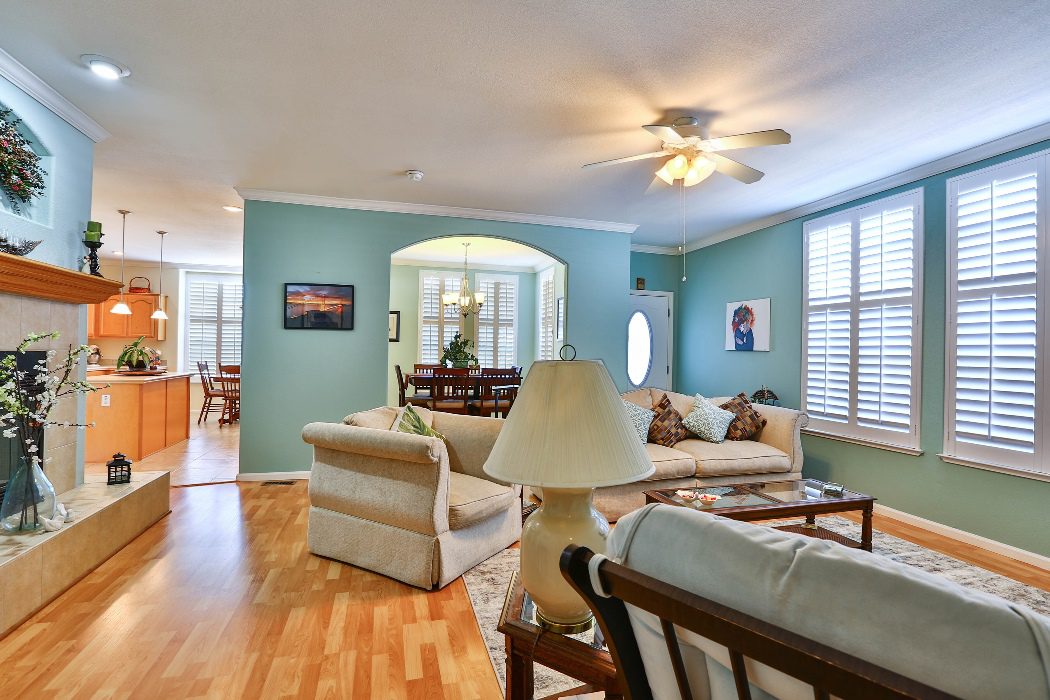Several months ago, I heard a presentation about mobile homes from Franco Perez, a Santa Clara County Association of Realtors member. His presentation really opened my eyes and changed my perception of the amenities a mobile home could provide.
I have had family members reside in mobile homes, mostly around the Brentwood area, that were basic in design and the mobile home park itself lacked any significant amenities. By the end of Franco Perez’s presentation, I had a whole new perspective on what mobile home living could be in Santa Clara County. Surprisingly, some of these units had the features and design details comparable to that of a $1.2 million home in Silicon Valley, but at a much lower price tag.


I wanted to learn more about mobile homes, so I reached out to Realtor Lawrence Gillen of Compass for an education on all things mobile homes.
Lawrence has been selling mobile homes for over 15 years. The first thing he shared with me is the term “mobile home” and “manufactured home” are used interchangeably. After 1976, building standards increased and the term “manufactured home” became slightly more common. For the purpose of this article, I will use the more common term “mobile home.”
When you purchase a mobile home, you are buying the unit only. The land it rests on is owned by the mobile home park provider and you are responsible to pay a rental fee for the space.
There are basically three types of mobile home parks: family parks have no age restrictions, senior parks are age-restricted and usually require at least one owner to be 55 years or older, and resident-owned or co-op parks are parks in which the mobile home owners actually own a financial stake in the park. The advantage of co-op parks is it is very unlikely the park would ever be sold.
Gillen informed me the average space rent in San Jose is about $1,100 per month. Most parks offer a clubhouse and may also have other amenities such as a pool, spa, exercise room, tennis court, RV parking, BBQ area, playground or more. He recommends you try to talk to existing residents for their feedback on the park, and also try to drive through the park at different times of the day to make your own assessment of whether the amenities are adequate and that the park meets your expectations.
There are five cities in Santa Clara with rent stabilization ordinances for mobile home parks: Gilroy, Los Gatos, Milpitas, Morgan Hill and San Jose. In cities with ordinances, annual increases are capped and tied to the Consumer Price Index. Here are the existing mobile home rent stabilization ordinances in Santa Clara County:
| City | Allowed Annual Space Rent Increase | Maximum Increase (Cap) |
| Gilroy | 80% of CPI | 5% |
| Los Gatos | 100% of CPI or 3%, whichever is greater | 5% |
| Milpitas | 50% of CPI | 5% |
| Morgan Hill | 75% of CPI | 8% |
| San Jose | 75% of CPI or 3%, whichever is greater | 7% |
As with any major purchase, buying a mobile home comes with its own set of nuances. First off, there are only about five major lenders that offer financing. Be sure to work with a professional that specializes in this area of financing. The terms of the financing are traditionally shorter than the standard 30-year mortgage most homebuyers expect. Finance terms for mobile homes are usually 20 or 23 years. There is no mortgage insurance needed when buying a mobile home, so that is a cost-saver. Closing costs are also substantially less than costs associated with buying a traditional home.
When purchasing a mobile home you must also get approved by the mobile home park. Most mobile home park providers require that owners have an income of at least three times the housing expense. For mobile homes, that includes the loan for the mobile home itself, the amount to rent the space, taxes and insurance.


Mobile homes are not considered real property, but you still can gain equity on your purchase because mobile homes are a scarce resource in our area and there is an increasingly higher demand for them. If you are preparing for your next move, you may want to consider purchasing a mobile home instead of renting an apartment.
For example, by renting an apartment for 10 years at $3,000 a month, you are spending a minimum of $360,000, and when you include rent increase over time, you are looking at spending upwards of approximately $400,000+ out-of-pocket.
Although a single-family home could possibly appreciate $200,000 to $300,000 over that same 10-year period, a mobile home could still gain you $40,000 to $60,000 in appreciation over that same time. Today, you can own a very nice three-bedroom, two-bathroom mobile home filled with modern amenities for about $400,000 and still have the ability to write off the interest on your loan. On the other hand, you will have zero tax incentives and no opportunity to earn equity when renting.
San José Spotlight columnist Neil Collins is CEO of the Santa Clara County Association of Realtors, a trade association representing more than 6,000 real estate professionals in Santa Clara County and surrounding areas. His column appears every fourth Thursday of the month. Contact Neil at [email protected] or follow @neilvcollins on Twitter.



Leave a Reply
You must be logged in to post a comment.